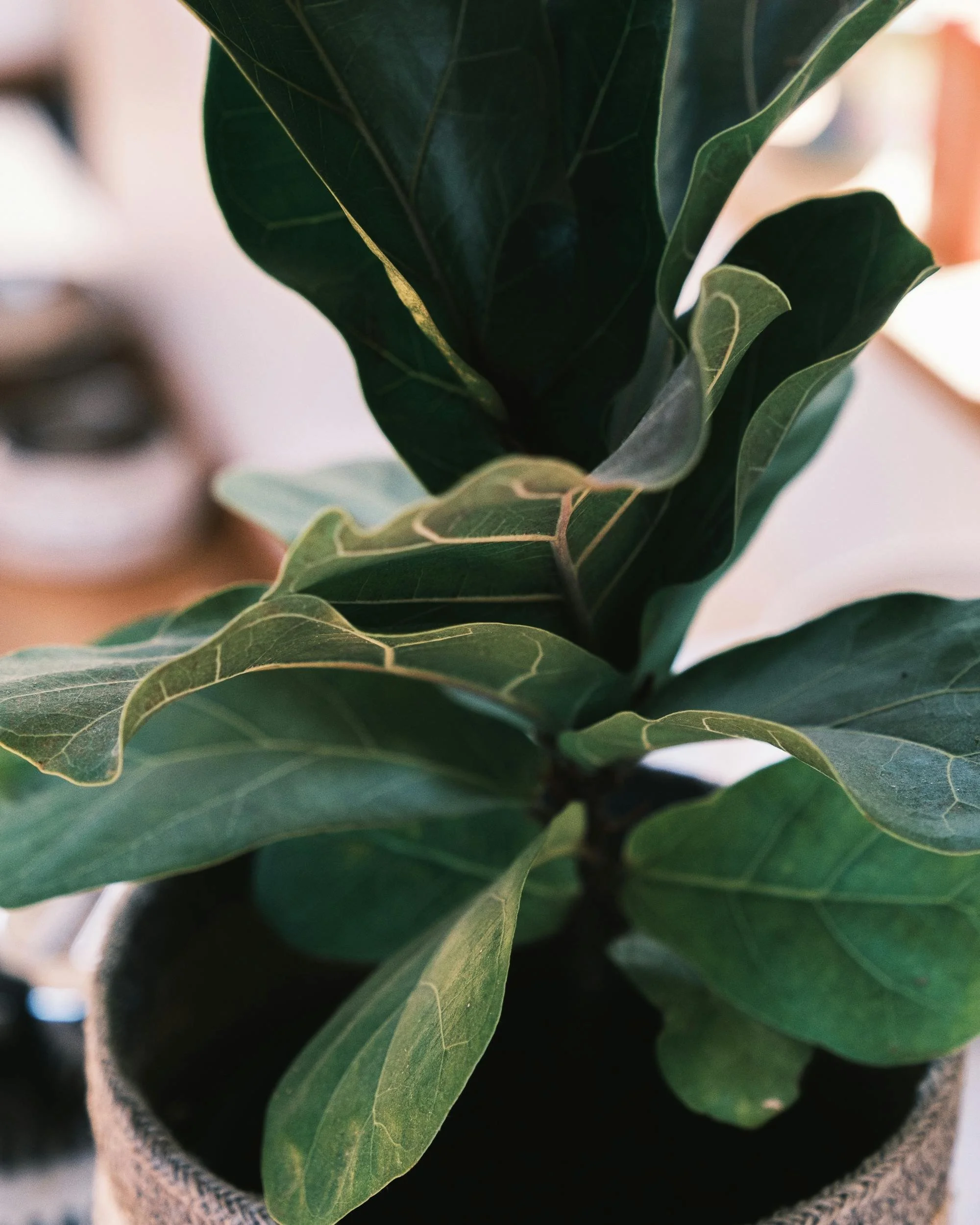Fiddle Leaf Fig Care Guide
The fiddle leaf fig (Ficus lyrata) is loved for its bold, glossy leaves and easy care, making it a favorite for any home. This guide covers the essentials—like light, watering, and pruning—to help your plant stay healthy and vibrant.
1. Placement
The fiddle leaf fig (Ficus lyrata) thrives in bright, indirect light. Place it near a window with filtered sunlight, but avoid direct sun as it can scorch the leaves.
It prefers a stable environment, so keep it away from drafts, heaters, and air conditioners.
Rotate the plant occasionally to ensure even growth on all sides.
2. Watering
Water your fiddle leaf fig when the top 1-2 inches of soil feel dry. Stick your finger into the soil to check moisture levels.
It's important not to overwater; the plant is sensitive to soggy soil and can develop root rot.
Ensure the pot has good drainage and always empty the saucer if water collects there.
3. Soil & Potting
Fiddle leaf figs prefer a well-draining, lightweight soil mix. A high-quality, potting mix designed for indoor plants is ideal.
Avoid using garden soil, as it can become compacted and may not provide the drainage that fiddle leaf figs need.
When choosing a pot for your fiddle leaf fig, ensure it has drainage holes to prevent water from pooling at the bottom, which can lead to root rot.
The pot should be slightly larger than the current one to accommodate future growth.
4. Pruning & Maintenance
Remove any dead or damaged leaves by cutting them off at the base.
You can also trim back the top to encourage a bushier appearance.
Wipe the leaves with a damp cloth regularly to remove dust and keep the plant looking its best.
5. Fertilizing
Feed your fiddle leaf fig with a balanced, water-soluble fertilizer every 4-6 weeks during the growing season (spring and summer).
Reduce feeding frequency in the fall and winter when the plant's growth slows.
Be cautious not to over-fertilize, as this can lead to nutrient imbalances.
6. Propagation
Propagation of a fiddle leaf fig is typically done through stem cuttings. Take a cutting with at least one leaf and a few inches of stem.
Dip the cut end in rooting hormone and place it in a pot with well-draining soil.
Keep the cutting in a warm, humid environment and ensure the soil stays moist.
Once roots develop, you can transplant the new plant into a larger pot.
7. Troubleshooting
Yellowing Leaves: Often a sign of overwatering or poor drainage. Check the soil moisture and ensure the pot has adequate drainage.
Brown Spots: May indicate sunburn or leaf disease. Move the plant to a location with less direct light and ensure good air circulation.
Leaf Drop: Can be due to sudden environmental changes or overwatering. Stabilize the plant’s environment and adjust watering habits as needed.
8. Seasonal Care
Spring/Summer: This is the active growth period. Increase watering and fertilizing as the plant grows more quickly. Provide ample light and ensure it gets enough humidity.
Fall/Winter: Growth slows down, so reduce watering and fertilizing. Keep the plant in a stable, warm environment, avoiding cold drafts. Maintain lower humidity levels but avoid letting the soil dry out completely.
9. Repotting
Repot your fiddle leaf fig every 1-2 years or when it outgrows its pot.
Repotting is best done in the spring or early summer.
Choose a pot that is 1-2 inches larger in diameter than the current one.

